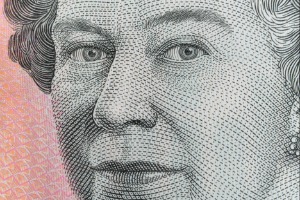Pound To Dollar Rate Retreats, Uncertainty Dominates After Shock US Data

Uncertainty has been a key element in markets with traders attempting to adjust to the new geo-political realities after a week of dramatic headlines surrounding the Ukraine situation.
US trade policies and pre-weekend position adjustment remained a key element in markets.
A further, unexpected, dimension was added on Friday with much weaker than expected services-sector data from the US.
This release increased speculation that the US economy will be hurt by the political agenda, while also triggering fresh alarm surrounding the global economy.
The Pound to Dollar (GBP/USD) exchange rate hit 2-month highs just below 1.2680 before a retreat to 1.2635 as risk appetite deteriorated.
Scotiabank commented; “loss of interim support at 1.2630 in the next couple of sessions may see the pound ease back more. Support is 1.2550/75.”
The Pound to Euro (GBP/EUR) exchange rate edged higher to 1.2085 and close to 2025 highs.
German Federal elections will be held on Sunday with the outcome liable to trigger a fresh round of uncertainty over the outlook for European defence spending and fiscal policy.
ING commented; “Markets are not pricing in much risk related to a stronger result by the AfD.”

The UK PMI manufacturing index dipped to a 14-month low of 46.4 for February from 48.3 the previous month and below consensus forecasts of 48.5 while the services-sector index edged higher to 51.1 from 50.8 previously.
Orders declined at the fastest pace since August 2023 while employment declined at the fastest rate since November 2020.
Strong upward pressure on wages triggered the sharpest increase in costs for 21 months, although there was a limited net improvement in business confidence.
Chris Williamson, Chief Business Economist at S&P Global Market Intelligence commented; “Early PMI survey data for February indicate that business activity remained largely stalled for a fourth successive month, with job losses mounting amid falling sales and rising costs.”
He added; “The lack of growth alongside rising price pressures points to a stagflationary environment which will present a growing dilemma for the Bank of England.”
The US PMI manufacturing index edged higher to an 8-month high of 51.6 for February from 51.2 previously.
There was, however, a surprise slide in the services-sector index to a 25-month low of 49.7 from 52.9 in January and well below expectations of 53.0.
Services-sector companies linked the downturn to uncertainty surrounding federal spending cuts and the potential economic outlook.
Inflation evidence was mixed with a jump in manufacturing prices while service-sector companies increased prices at the slowest rate for over four years.
Chris Williamson, Chief Business Economist at S&P Global Market Intelligence commented; “The upbeat mood seen among US businesses at the start of the year has evaporated, replaced with a darkening picture of heightened uncertainty, stalling business activity and rising prices.
He added; “Optimism about the year ahead has slumped from the near-three-year highs seen at the turn of the year to one of the gloomiest since the pandemic.”
The US data will add an additional dimension of uncertainty over Federal Reserve policy.
Popular Conversions
- Pound to Euro
- Pound to Dollar
- Pound to New Zealand Dollar
- Pound to Australian Dollar
- Pound to Canadian Dollar
- Euro to Pound
- Dollar to Pound
- Euro to Dollar
Financial Market Newsflash
No financial news published today. Check back later.














